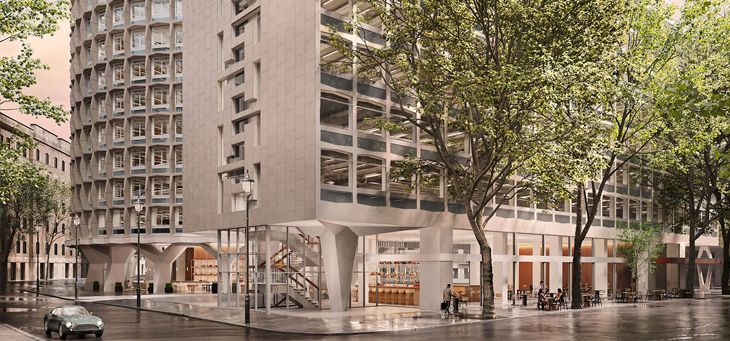Sustainability Series: Week 5, Efficient design and circular economy

Webinar: Reuse and design for reuse of concrete structures
Recorded: 12 October 2023
This webinar showcases projects illustrating ways in which concrete elements can be reused in their entirety, presented by members of the manufacturing and design teams.
A recording of this event is now available in the on-demand library.
_______________________________________________________________________________________________________
Blog: To use and use again
This is the fifth week of The Concrete Centre’s Sustainability Series and it focuses on material efficiency and circular economy, two integrated topics resulting in greater resource efficiency.
Material efficiency has long been a focus of the work of The Concrete Centre and the guidance we provide. This includes training, publications and tools to assist engineers in their design of efficient concrete structural frames. In recent years this guidance has evolved to provide more detailed analysis of the relationship between material efficiency and upfront embodied carbon.
The functionality of our Concept tool, a widely-used and trusted conceptual design tool for comparing material efficiency and costs of concrete frame options at the early stages of design, was recently updated to include embodied carbon. This works well alongside the publication Comparison of embodied carbon in concrete structural systems which provides useful graphs for evaluating the impact of load, span and structural system on embodied carbon through material efficiency of the structural frame. Our studies show that the volume of material for the concrete superstructure can be easily reduced by 25% with up to 50% possible with more consideration.
A new publication “Concrete Frames Explained” due to be released later this month builds upon this work, providing engineers, architects, contractors and clients a review of different structural concrete frame options.
Considered more holistically, concrete also offers the opportunity for material efficiency across the whole building and its entire life span by avoiding the need to install, replace and repair plasterboard and other surface finishes. Guidance on the design of high-quality visual concrete, acoustic performance, fire resistance and the use of its exposed thermal mass for further energy and material efficiency have been provided through a range of resources on our website, with navigation assisted via our Material Efficiency compass.
Strategies and activity to improve material efficiency through the life cycle of concrete are summarised in the publication Material Efficiency, which includes reference to the ongoing industry’s Resource Efficiency Action Plans (REAPs) and their focus on material efficiency in manufacture and construction. The latest output was to commission Reusefully to carry out and publish a Wastage Rates survey, to establish current data for wastage rates associated with blockwork and ready-mixed concrete use on site. The results (published here) indicate that rates of 5% for blockwork and 2% for ready-mixed concrete are appropriate to use in an LCA, which indicates a reduction since the rates were originally established over a decade ago.
Circular economy
While material efficiency is fundamental for reducing the amount of resources required, circular economy thinking also extends the focus beyond the boundaries of an individual product or buildings. Consideration of the potential reuse, recovery and recycling of products and materials at their ‘end of life’ is required, as is the greater use of secondary material in manufacture. In the refreshed UK Concrete’s Sustainability Construction Strategy to be launched this autumn, circular economy will be one of the four key areas of focus, evolving current measurement, reporting and guidance on resource efficiency to enable greater circularity across the built environment using concrete.
In a recent article my colleague Elaine Toogood says: “We talk about “end of life”, but in the case of concrete, a key question is: the end of which life? When we do a life-cycle analysis of a building, there’s an understanding that we’re looking at a period of 60 years – although we know that a concrete structure can retain its integrity and its usefulness for much, much longer’. And there are a growing number of exemplars of reusing concrete building structures in situ, extending their conceived serviceable life, and also structures being designed to facilitate disassembly of the rest of the building, or even the structure itself. These strategies are the subject of this week’s live webinar Reuse and design for reuse of concrete structures.
Eventually concrete will be broken into pieces and recycled, most commonly as aggregate or hardcore, where it goes on to have a second useful life at least as long as the first. Crushed concrete used as hardcore significantly reduces the amount of virgin aggregate that would need to be quarried. One of the exciting areas of current innovation is alternative uses for this crushed concrete such carbon capture, or to manufacture new cementitious materials. You can find out more about concrete’s evolving role in a more circular economy in this webinar recording.
You can find out more about concrete’s evolving role in a more circular economy in this webinar recording and on our website here.
Written by Jenny Burridge, Director, Structural Design, The Concrete Centre